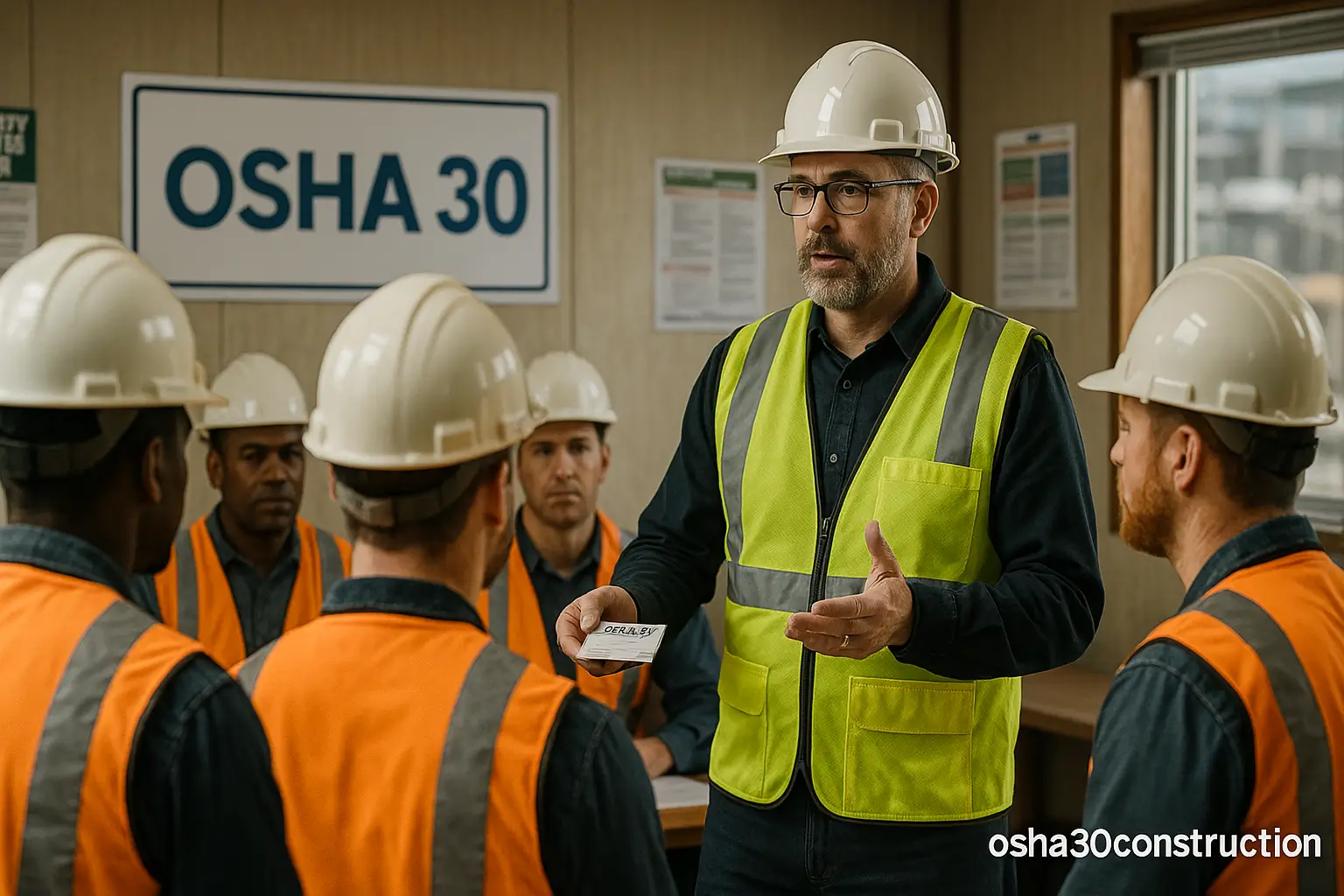OSHA Overview
Occupational Safety and Health Administration (OSHA) offers standards and a policy framework that keep organizations and their employees safe. The federal agency has been operating in the United States for decades, and its regulation and adherence is made necessary in over 50 states in the US.
OSHA-authorized training platforms offer courses in two levels; which is the 10-Hour Safety program and its 30-Hour Safety training program. Further, these trainings are divided in two categories which are Construction and General Industry.
In this guide, we will discuss the difference between OSHA 30-Hour Construction and OSHA 30-Hour General Industry.
What Is the OSHA 30-Hour Training Program?
OSHA 30-Hour safety training is a program that is suitable for supervisors, safety managers, workers, and all those professionals who are stepping into a new industry. It covers comprehensive aspects of the industry and lays down the rules and regulations pertaining to the safety of professionals and the workplace. It teaches hands-on skills to operate, work, and manage tasks at the worksite without jeopardizing the safety of fellow workers.
1. OSHA 30-Hour Construction Course
The 30-Hour OSHA Construction Course is designed to provide workers and supervisors in the construction industry with the essential knowledge and skills to maintain a safe and compliant work environment. This course offers in-depth training on safety regulations, hazard identification, and best practices to prevent accidents and injuries. The training complies with the Occupational Safety and Health Administration (OSHA) standards and is crucial for those who work in construction settings, where strict safety laws are enforced. By completing this course, participants will gain the knowledge to protect themselves and their coworkers on the job site.
As the construction industry remains one of the most hazardous sectors in the workforce, this course ensures that workers and supervisors have the tools they need to reduce the risk of accidents and fatalities. OSHA regulations are mandatory for employers to follow, making this course not only essential for meeting OSHA adherence but also beneficial for promoting workplace safety.
Who Needs This Training?
This course is intended for a broad audience in the construction sector who are directly involved in managing or performing construction-related tasks. This includes:
Construction Supervisors:
Supervisors are responsible for overseeing construction projects and ensuring that workers follow safety protocols. This course provides them with the knowledge needed to spot hazards, manage safety programs, and mitigate risks.
Safety Personnel:
Those who are responsible for ensuring safety measures are followed on construction sites can benefit from this course. It will help them understand the ins and outs of OSHA regulations and how to apply them effectively on the ground.
Project Managers:
This course is ideal for project managers who oversee the overall safety and completion of construction projects. It ensures they are fully aware of OSHA regulations and can take the necessary steps to prevent accidents.
On-Site Workers:
Construction workers, including laborers, electricians, carpenters, and other tradespeople, will gain valuable knowledge to protect themselves from hazards. Understanding the safety measures and procedures can help them identify and prevent potential dangers before they result in accidents.
Key Topics Covered in OSHA 30-Hour Construction Course
The key topics covered in the construction course include:
Introduction to OSHA & Managing Safety
Falls, Electrocution, Struck-By, and Caught-In/Between
Personal Protective Equipment (PPE) & Health Hazards
Stairways, Ladders, & Scaffolds
Electives – Specialty Topic Deep Dives
These topics help to identify the most dangerous aspects of construction work, particularly the Focus Four hazards. They ensure knowledge of and adherence to OSHA standards specific to construction (e.g., 29 CFR 1926). Moreover, it covers both general safety foundations related to construction and elective deep dives so workers can handle specialized risks.
2. OSHA 30-Hour General Course
Workers in the manufacturing, warehousing, and healthcare industries opt for the 30-Hour General Industry course. The 30-Hour General Industry course provides comprehensive safety and health training designed for supervisors, managers, and workers responsible for workplace safety in manufacturing, warehousing, healthcare, and other non-construction settings.
Covering OSHA regulations and hazard recognition, the program addresses key topics such as walking-working surfaces, hazard communication, machine guarding, electrical safety, personal protective equipment (PPE), ergonomics, and workplace emergency planning. Participants develop a deeper understanding of adherence requirements, risk prevention strategies, and employee rights.
This extended format offers in-depth instruction, interactive discussions, and practical examples to help ensure safe operations, reduce accidents, and maintain regulatory adherence across diverse general industry environments.
Who Needs This Training?
Earning the DOL card not only ensures adherence with federal safety regulations but also demonstrates a strong commitment to creating a safe, healthy work environment. Employers value it because it reduces workplace accidents, improves operational efficiency, and minimizes costly penalties. For individuals, the OSHA 30 credential enhances professional credibility, broadens career opportunities, and often meets mandatory training requirements in many industries.
Simply put, OSHA 30-Hour General Industry training isn’t just about meeting legal obligations; it’s about fostering a proactive safety culture that protects both people and productivity.
Key Topics Covered in OSHA 30-Hour General Industry Course
The key topics covered in the general industry course include:
Introduction to OSHA & Employer/Employee Responsibilities
Walking-Working Surfaces, Exit Routes, and Emergency Planning
Personal Protective Equipment (PPE) & Industrial Health Hazards
Hazard Communication, Machine Guarding, and Lockout/Tagout
Electives – Industry-Specific Safety Practices
These topics address the leading causes of workplace injuries and illnesses in general industry settings. They ensure familiarity with and adherence to OSHA standards for general industry (e.g., 29 CFR 1910). Moreover, the course provides both a foundation in universal safety principles and elective modules that prepare workers to manage specialized hazards unique to their job roles.
Conclusion
While both the OSHA 30-Hour Construction and General Industry courses share the same goal, ensuring workplace safety, they cater to different work environments and hazards. Construction focuses on site-specific risks like falls, scaffolding, and equipment operation, while General Industry addresses manufacturing, warehousing, healthcare, and similar sectors, covering topics such as machine guarding and ergonomics. Choosing the right course depends on your industry, job role, and safety responsibilities. By selecting the right OSHA training, workers and employers can better protect themselves, remain compliant, and foster a strong safety culture in their workplace.






